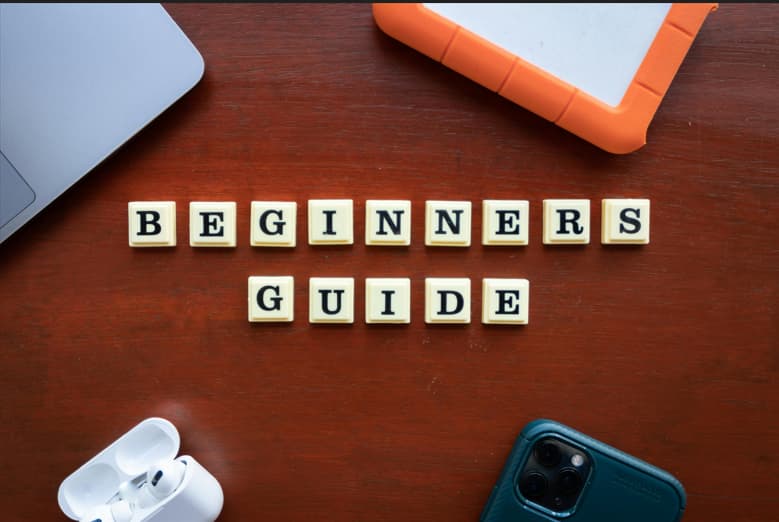The concept of investing has long been associated with wealth, privilege, and financial expertise. However, in 2025, the reality is changing rapidly. Thanks to evolving financial technologies, user-friendly platforms, and increasing awareness, investing is no longer a game restricted to the rich. In fact, with just a modest income and a clear plan, anyone can begin their investment journey no matter how limited their resources may be.
This guide is specially written for individuals who are new to investing, feel overwhelmed by financial jargon, or believe they don’t have “enough” money to start. The truth is: you don’t need to be wealthy to build wealth. What you need is clarity, consistency, and the courage to take the first step.
Why Even a Small Investment Is Powerful
Many people hesitate to invest because they believe small amounts won’t make a difference. This assumption couldn’t be further from the truth.
Investing isn’t just about the amount it’s about time and discipline. Thanks to compound growth, even small contributions can grow exponentially over time. For example, investing just $30 (around PKR 8,000) per month at an 8% annual return can grow into over $15,000 in 20 years.
By starting early, you give your money time to work for you. That’s why the best time to begin is now, regardless of your income.
Step 1: Lay the Foundation Know Your Financial Status
Before investing a single rupee or dollar, assess your current financial health. Start by answering:
- Do I have any high-interest debts?
- Have I built an emergency savings buffer?
- Am I living within my means?
These are not just questions they’re prerequisites. If you’re constantly borrowing to meet monthly expenses, investing should wait until you’ve stabilized your financial base. However, if your essentials are covered and you’re spending less than you earn, you’re ready to begin.
Step 2: Set Clear and Achievable Financial Goals
Define what you’re investing for. Without a goal, it’s easy to get distracted or discouraged. Financial goals can be:
- Short-term: Saving for a gadget, vacation, or course in the next 1–2 years.
- Medium-term: Planning for a car, down payment, or starting a business in 3–5 years.
- Long-term: Retirement planning, children’s education, or home ownership after 10+ years.
Each goal will influence your risk tolerance and choice of investment vehicles. The more distant the goal, the more aggressive your strategy can be.
Step 3: Build an Emergency Fund First
An emergency fund is your financial safety net. It prevents you from dipping into investments during emergencies. This fund should ideally cover 3–6 months of living expenses.
Start by putting money into a separate savings account or a digital wallet. In Pakistan, tools like NayaPay or SadaPay can be helpful. Internationally, services like Chime, Ally Bank, or Monzo offer digital saving solutions.
Only after building this safety cushion should you begin allocating money toward investments.
Step 4: Understand Your Investment Options
There are countless ways to invest. Here’s a breakdown of popular and beginner-friendly options:
1. Micro-Investing Apps
These platforms allow you to invest small amounts even your spare change. Ideal for first-timers, they don’t require large deposits or advanced knowledge.
Examples:
- Acorns – Rounds up purchases and invests the difference.
- Robinhood – Zero-commission trades and fractional shares.
- M1 Finance – Build custom portfolios with automatic contributions.
In Pakistan, Barwaqt and Zindigi are emerging platforms for savings and financial planning.
2. Index Funds and ETFs (Exchange-Traded Funds)
If you want low risk and passive income, index funds and ETFs are excellent. These funds track a basket of stocks (like the S&P 500) and offer instant diversification.
Recommended Platforms:
- Vanguard (vanguard.com)
- Fidelity (fidelity.com)
- Interactive Brokers – Supports international clients including those from Pakistan.
These platforms offer low-fee options that grow steadily over time. Even small monthly contributions add up.
3. Mutual Funds (Especially in Pakistan)
Pakistani investors can explore mutual funds through:
- UBL Fund Managers
- Meezan Mutual Funds
- HBL Asset Management
These funds allow you to invest in portfolios tailored to different risk levels. Some options are Shariah-compliant, ideal for investors seeking halal alternatives.
4. Government Securities
Low-risk government bonds or saving certificates are perfect for conservative investors. In Pakistan, explore:
- Defense Saving Certificates
- Regular Income Certificates
- Behbood Saving Certificates
These are available through the National Savings department and offer fixed returns.
Step 5: Educate Yourself Before You Invest
One of the most valuable investments is in financial education. Investing without understanding is like driving blindfolded.
Top learning platforms:
- DigiSkills.pk – Free digital training for Pakistanis.
- Investopedia – In-depth finance guides.
- Coursera – Courses on financial literacy, budgeting, and investment basics.
Spending time learning can protect you from scams and help you make smarter decisions.

Step 6: Automate Your Investment Habits
Human behavior often gets in the way of financial success. Automating your contributions eliminates excuses and builds long-term consistency.
Most investment platforms allow automatic monthly transfers from your bank account. You can start as low as PKR 1,000 per month. Set it and forget it your portfolio will grow without constant attention.
Step 7: Start a Side Hustle and Invest the Extra Income
If your current income doesn’t leave room for investing, consider developing a secondary income stream. Freelancing, teaching online, affiliate marketing, or content creation are great options in 2025.
Even an extra PKR 5,000 per month can be invested entirely. Over time, these investments can generate returns that surpass the side hustle itself.
Step 8: Track Your Portfolio and Rebalance Annually
Investment isn’t about blind faith it’s about strategic decisions. Track your portfolio every 3–6 months and rebalance if needed. For example, if your equity exposure has grown too high due to market gains, shift a portion to fixed income for balance.
Use tools like:
- Google Sheets
- Yahoo Finance
- Personal Capital
- KTrade (Pakistan)
Rebalancing ensures your investments stay aligned with your risk tolerance and goals.
Step 9: Avoid High Fees and Emotional Decisions
Many beginners lose money not due to bad investments, but due to fees and impulsive behavior. Avoid high-cost brokers and platforms that charge hidden fees. Stick with low-cost ETFs or direct mutual funds.
Also, don’t make decisions based on fear or greed. Investing is a long-term game. Markets fluctuate don’t panic. Stay calm, review your plan, and stay committed.
Final Thoughts
Investing with little money in 2025 is not only possible it’s becoming normal. You don’t need a big bank balance. You don’t need a finance degree. What you do need is clarity, discipline, and a long-term mindset.
Start small. Be consistent. Keep learning. The path to financial freedom is paved with small, smart steps taken over time.
FAQs
1. Can I really start investing with a small amount of money in 2025?
Yes, absolutely. With the rise of micro-investing platforms and fractional shares, you can begin investing with as little as a few hundred rupees or a few dollars. The key is consistency, not the amount.
2. What is the safest way to invest with limited funds?
The safest options include low-cost index funds, government bonds, and mutual funds. These investment vehicles offer diversification and reduced risk, especially for beginners.
3. Is it better to save money or invest when I have a low income?
Ideally, do both. First, build an emergency fund covering 3–6 months of expenses. After that, start investing with small amounts to grow your wealth over time.
4. Which apps are best for beginner investors in Pakistan?
Apps like Barwaqt, Zindigi, and KTrade are gaining popularity in Pakistan. For international access, platforms like Robinhood, Acorns, and M1 Finance are user-friendly and allow small investments.
5. What’s the difference between saving and investing?
Saving keeps your money safe but usually offers low returns. Investing involves some risk but gives you the chance to grow your money over time through assets like stocks, mutual funds, or ETFs.
6. How much money do I need to start investing in mutual funds?
Many mutual funds in Pakistan allow you to start with as little as PKR 1,000. Internationally, some platforms also offer zero minimum investment mutual funds.
7. Should I worry about market volatility if I’m only investing a small amount?
No. When starting with little money, your focus should be on learning and building habits. Market ups and downs are normal. What matters is regular contributions and long-term thinking.
8. Can I invest monthly even if I don’t have a fixed salary?
Yes. If your income is irregular, consider setting a flexible goal like investing a percentage of your income rather than a fixed amount. Automation tools also help you stay consistent.
9. Is it possible to invest in US stocks from Pakistan?
Yes, using platforms like Interactive Brokers, Etoro, or through Roshan Digital Account, Pakistani residents can invest internationally with minimal capital.
10. What should I avoid when starting with little money?
Avoid high-fee brokers, “get-rich-quick” schemes, and emotionally-driven decisions. Focus on low-cost, diversified, and well-regulated investment options that match your financial goals.









